
We’ve all encountered people who are difficult to work with and whom we try to steer clear of. And thankfully, we’ve also worked with great people. Those who help us get things done without any drama. Having these great people on board is good for your bottom line, targets, bottom line and peace of mind. And importantly, these are also the people you actually have fun working with. They play a big role in team collaboration and boost bottom-line success.
Don’t you wish you had more of these people? Wouldn’t you love to be able to easily identify them in your organisation? And how much easier would your life be if you could figure that out before you hire, before you make an offer, instead of the usual 3 weeks after onboarding?
You are most likely familiar with the term employee engagement. Engagement is the emotional connection an employee feels toward the organization, and it greatly influences behavior and level of effort. The alarming fact for business leaders is that, according to Gallup, only 15% of employees are truly engaged around the world, costing us $7 trillion in productivity each year.
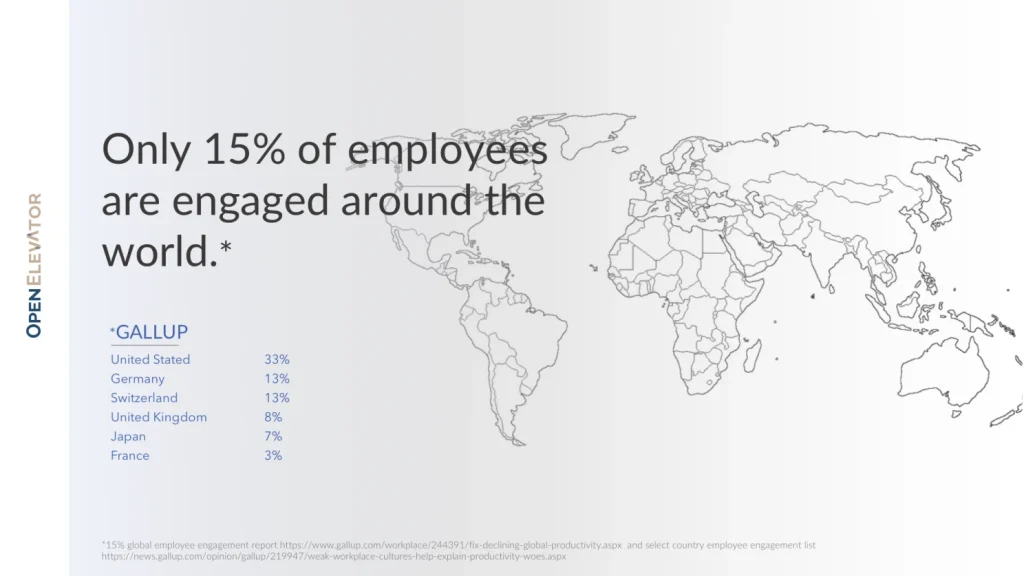
Team collaboration and boosting bottomline results are directly affected by this lack of engagement.
The US stands out at 33%, especially when you contrast that with the UK at 8%, Japan at 7%, and France at an unbelievable 3% (partially due to deep-rooted cultural dynamics at play here)… Considering such low single-digit numbers in developed countries, there is a lot of room for upside. Imagine what just a few percentage points increase could mean in global economic terms—or for your company.
Low employee engagement leads to high employee turnover. Disengaged employees—those who feel that they have a choice externally or internally—run away fast from an unhappy situation. Those who stay cost companies in terms of low productivity. And for those that leave, even a below average turnover of 10% (average is 13% in the US & Europe) is estimated to cost a 100-people organization $1.5 million…
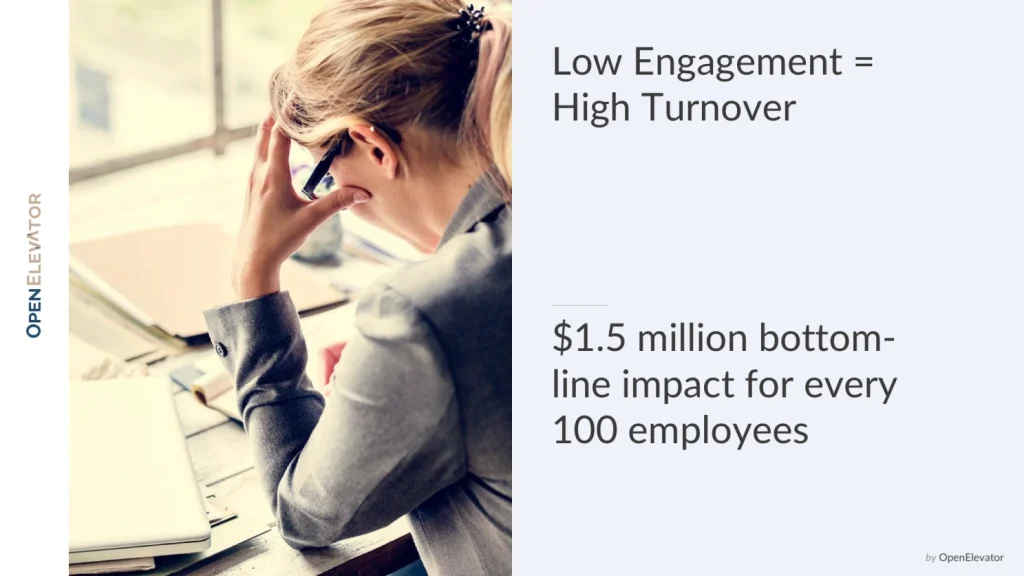
Here’s how you can estimate your turnover cost:
COST OF TURNOVER = number of employees X turnover rate X average salary X 1.5
OR for the rough back-of-the-envelope estimate:
COST OF TURNOVER = number of employees X 15,000
(*This assumes 1.5x the annual salary. Based on 2 methods: 1) According to Deloitte, the cost of losing an employee can range from tens of thousands to 1.5-2X the annual salary. And 2) the 1.5 years of cost to an organization, considering the 0.5 year (6 months) of employee disengagement prior to resigning while looking for another position + the 0.5 year (6 months) average time to fill the open position + the 0.5 year (6 months) average time to train the new hire.)
FOR EXAMPLE:
for a 100-person organization
With 10% turnover (average turnover is 13%),
With $100k average annual salary
You get:
COST OF TURNOVER = 100 X 10% X $100,000 X 1.5 = $1,500,000
This cost includes:
Even worse than seeing the magnitude of your past turnover cost is realising that at any given time—such as now—there are plenty of disengaged people who are on your team and on your payroll. The great news is that you can do something about it today—and in doing so, enhance team collaboration and boost bottomline outcomes.
The drivers of employee engagement are clear. To quote Gallup,
“Employees are more likely to be engaged if their basic human needs are met.”
There are several frameworks for understanding our basic human needs. You might be familiar with Maslow’s Hierarchy of Needs, Tony Robbins’ 6 Human Needs, Tony Hsieh’s Happiness Framework, Ikigai (Japanese for “a reason for being”), or even others.
But while there are several frameworks, they all include the following four needs: safety, growth, connection, and meaning.
Google confirmed this exact finding empirically with “Project Aristotle.” Google studied 180 teams, conducted 200+ interviews, and analyzed over 250 different team attributes to understand what successful teams have in common.
The top four most important attributes are the SAME as our basic human needs!
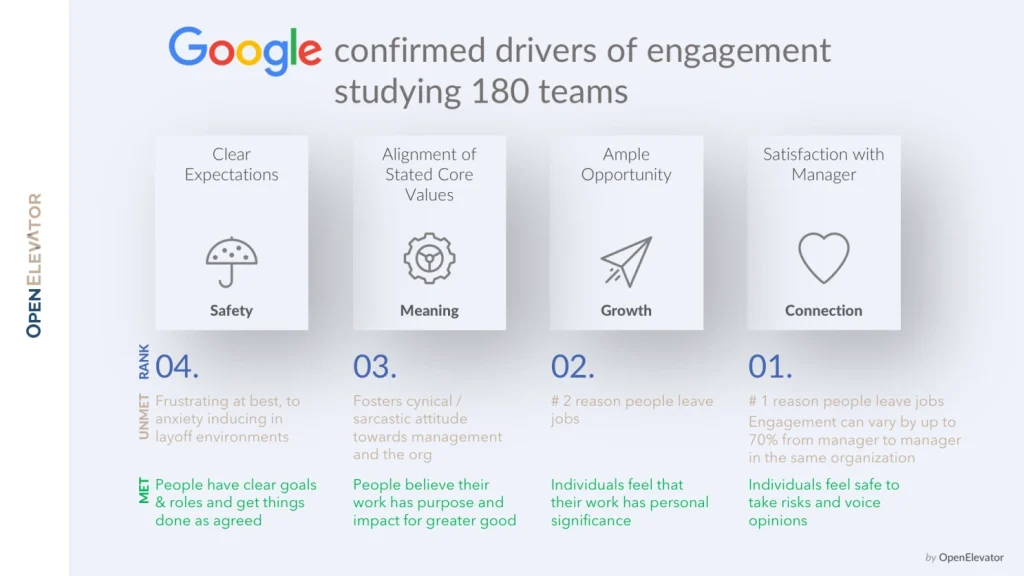
Of these four, the need for connection with the manager is the No.1 driver of employee engagement, and in fact, the No. 1 reason people quit their job is their dissatisfaction with their relationship with their direct boss. The relationship with the direct boss is SO important that engagement can vary by up to 70% from manager to manager in the same organization. While most people don’t know these statistics, everyone knows the tremendous impact of the manager from their own experience, and the strong influence on team collaboration and boost bottomline potential.
There are TWO reasons why the demand for meeting the four basic human needs at work is increasing. And it will keep increasing as we continue to have improved quality of life on a global scale, with individuals having more possibilities to bring their talents and more freedom to choose where they give their energy.
The type of work required of employees has changed
The work required of employees has changed from a demand for skilled work (e.g., blacksmiths, carpenters) to unskilled work focused on meeting efficiency quotas (e.g., production line workers) to the ever-increasing demand for innovation, creativity, & customer service.
In the last 250 years, since the start of the first Industrial Age, work has evolved tremendously from needing capable bodies to needing the whole person to show up, with personality, commitment, motivation…
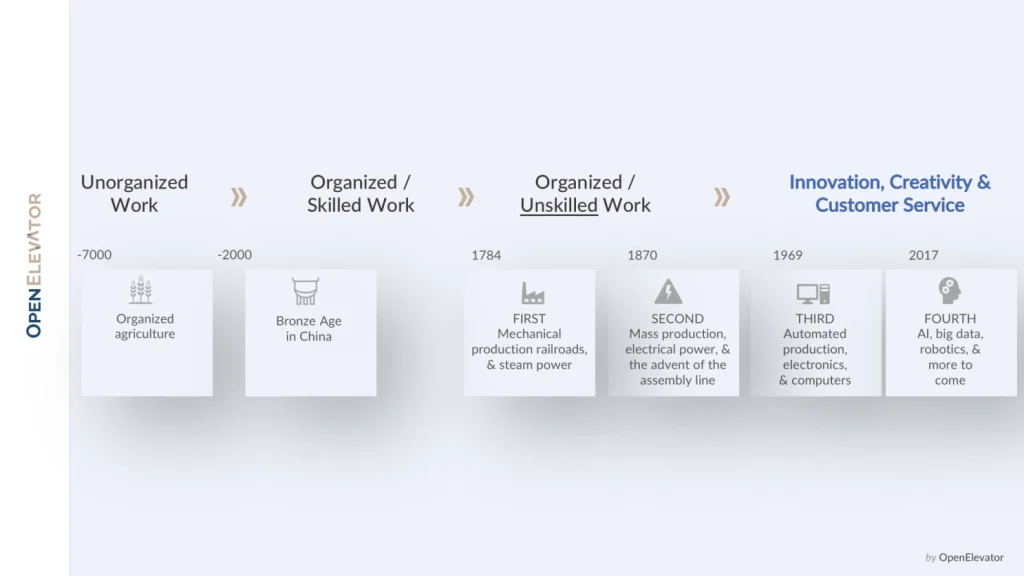
b) The cultural demand on work to meet human needs has changed
Our basic human needs are not new or changed. What has changed is our sense of where those needs should be met. While in the past people mostly looked to meet the higher-level needs of connection and meaning in their families, communities, clubs, and churches, today our culture demands these from our workplaces.
We can see this evolution from the time of Henry David Thoreau 200 years ago when he wrote about the individual’s “quiet desperation” for more, to 25 years ago when books (including classics like Good to Great by Jim Collins) underscored the need for corporate mission & vision statements articulating the bigger meaning and purpose for the organisation, to now, when there is talk of meaning and purpose EVERYWHERE.
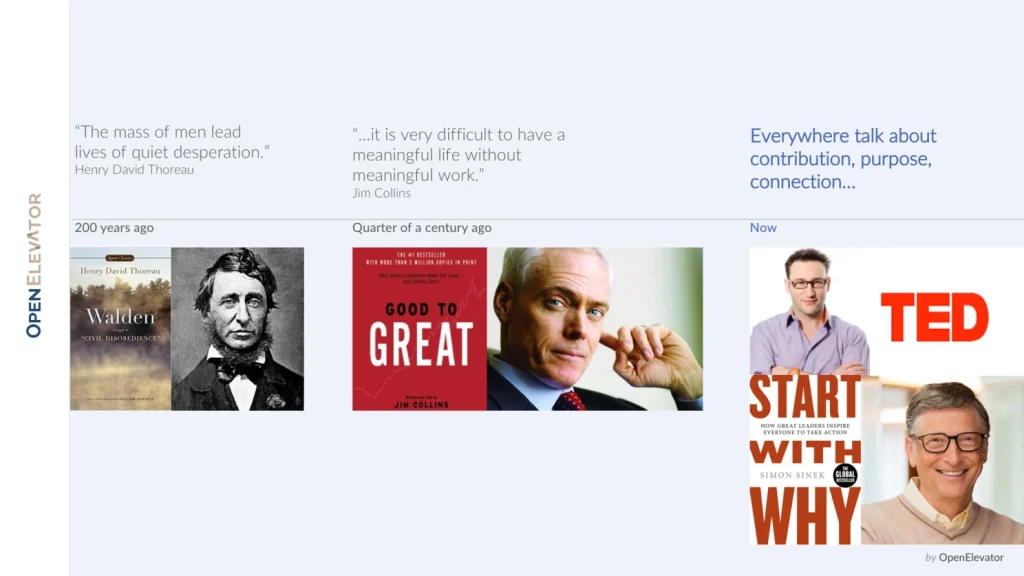
So, depending on what is most pressing, based on their very personal circumstances, individuals look to meet their needs, but the pressure on companies to deliver the full spectrum is absolutely there, especially to remain competitive and ensure team collaboration and boost bottomline impact.
When I was growing up, adults asked:
“What do you want to be?”
while today the implicit question for young people is:
“What are you going to do?”
Focused on meaning and purpose, like never before, no wonder millennial, labeled “the job hopping generation,” are difficult to retain.
Of course, it’s NOT that older folks like me don’t care about meaningful work… it’s just much harder to leave a good paying job/career as your level of responsibilities grows in life (incl. kids, mortgage, etc.).
So depending on what is most pressing, based on their very personal circumstances, individuals look to meet their needs, but the pressure on companies to deliver the full spectrum is absolutely there, especially to remain competitive and an employer of choice — today and in the future.
The good news is that most companies already have some processes in place that can support you in increasing your team engagement.
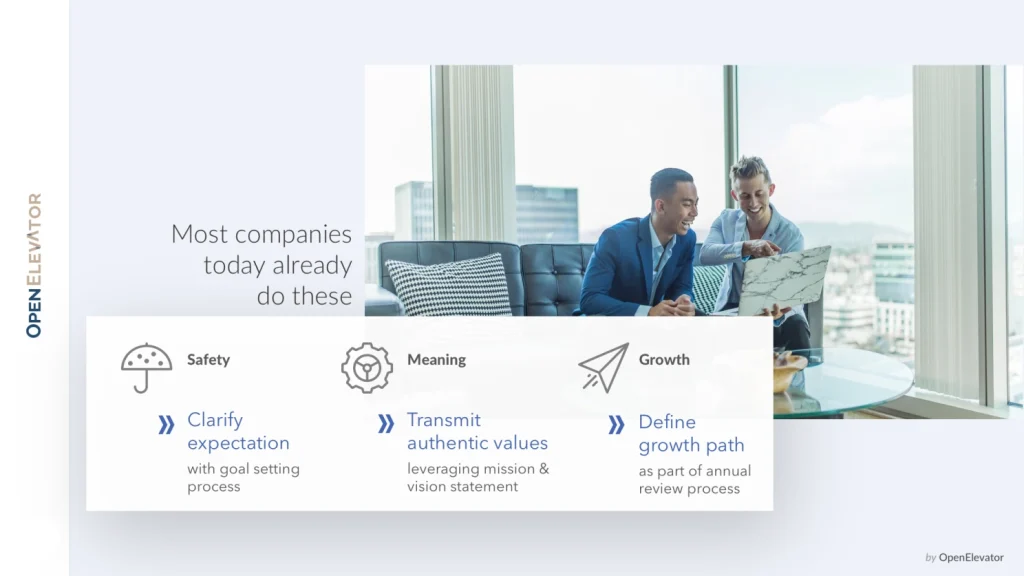
For safety: set clear expectations in the goal-setting process. Even senior people joining your team need that. This might sound trivial or more difficult in dynamic environments to define, but it is absolutely better to have clear expectations defined with the understanding that they will need to be revisited and revised, versus not having any at all.
And as you truly understand, value and want to increase engagement long-term, don’t do layoffs. Yes. Period. There is an avalanche of data to support this. The trust a layoff erodes is impossible to gain back.
For meaning: uncover and live your tribe’s authentic core values. Leverage your corporate vision & mission statements, while digging deeper to uncover what values are most important in your area/in your tribe. Ask yourself what are you about, “who” you are and “why” you exist, beyond making money. Perhaps it’s customer service or facilitating the best decision-making… For example Philip Morris’ core value: “defending the right to personal freedom of choice, including the freedom of choice to smoke.”
Regarding this “beyond making money” Oh Financial Services! Here’s the special note for you and anyone else who actually is doing business focused on making money. Well, if you dig deeper and find nothing more that drivers you. If making money to make money is really your genuine core value, that is NOT wrong. It’s also not bad. At the end, it’s far better to be honest about this than to try to string together good-sounding messages which everyone knows are complete nonsense. Authentic is better than sounding good!
For growth: define a growth path for each person during your company’s annual review process. Lack of growth opportunities is the No. 2 reason people leave their jobs. Sometimes it is hard for managers in large companies to see their team members move on…but you know in the long-run, nothing good comes from holding someone back.
Taking these actions reinforces team collaboration and boost bottomline effectiveness in your organization.
Connection is the No. 1 driver of employee engagement. Connection is necessary for Safety and the foundation for Meaning. Brené Brown says it beautifully:
“we are hardwired for connection”
Connection is a prerequisite for team success (team being 2+ people) because there is this chain reaction: starting with the fact that we trust and respect people we feel connected with, which is necessary for inclusion. And since we are only open to include (hear and consider) different opinion from people we trust, respect, have a connection with, diversity can only flourish with inclusion. And only with diversity — of ideas, skills, background — do teams deliver outstanding innovation, creativity and customer service.
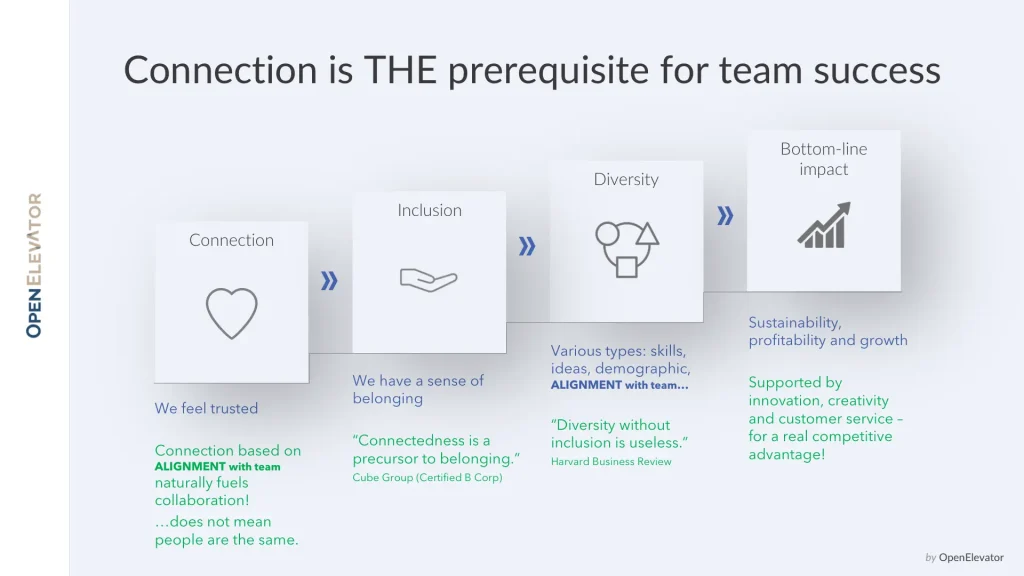
Besides the absolute necessity for Connection to foster Safety and Meaning, connection also has a profound impact on Growth for the individual and the organization. Organisations that offer growth without connection look very much like “Level 3” organisations as described in the book Tribal Leadership by David Logan. They are highly competitive internally and political with classes of winners and losers, promoting toxic, information-hoarding, lone warrior behaviour. The result is poor team collaboration, high cost of turnover, lack of competitive advantage in the market as an employer of choice, and lack of sustainability, profitability and bottom-line growth.
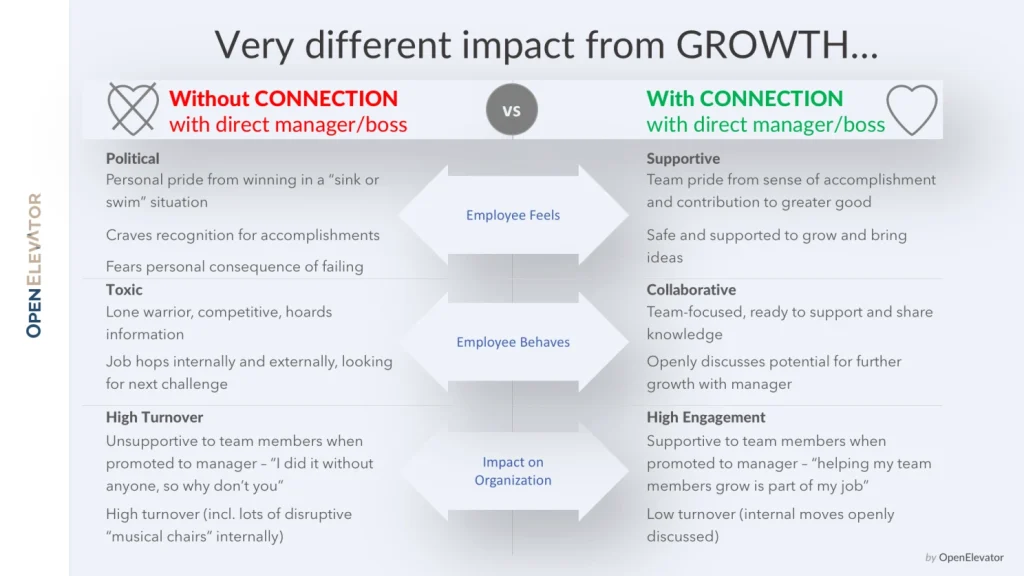
While the value of connection is substantial for the individual and for the organization, unfortunately most companies are not using processes, methods or tools to support connection.
Before we can act, we must understand. So, the thing is…this is an important point we want to share: connection at work is based on very specific attributes, unlike the breadth of reasons we connect with people in the rest of our life.
You might have experienced or seen best friends with lots of shared interest, preferences, experiences, etc. who start working together and then find that their friendship suffers and they hate working together. It seems nearly inexplicable that despite their great friendship they have a hard time working together. What they and most of us miss is that despite all their similarities (above the waterline of visibility), the attributes for successfully working together just do not match well.
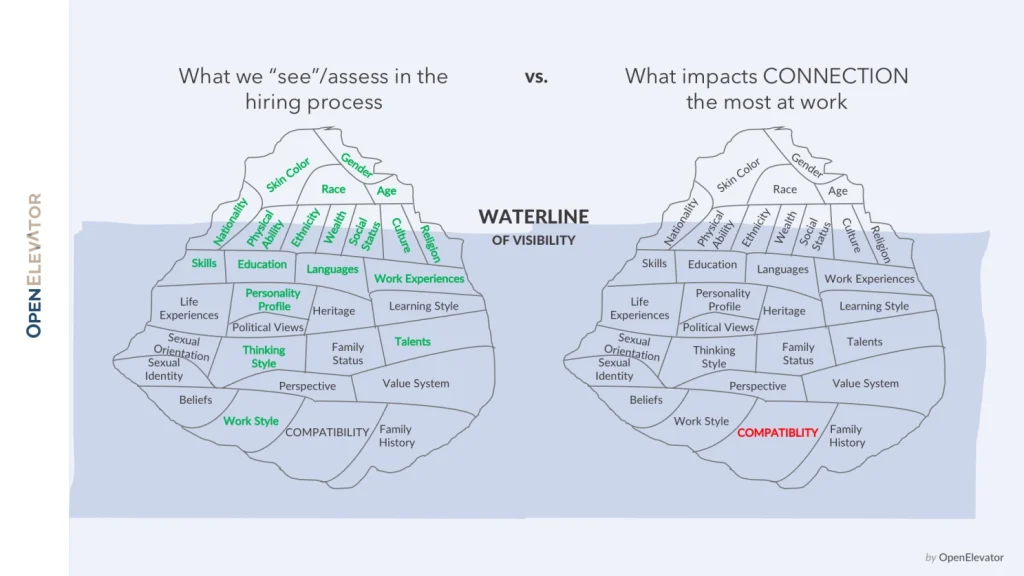
First it’s important to realize that alignment is a measure between two people — and so by definition, any one-sided assessment CANNOT and will NOT reveal alignment.
And what is even more important to understand is that when people are aligned, it does NOT mean they are the same. They do not think the same, they do not have the same background, they do not come from the same place, they are not from the same demographic group… Working with or hiring people who are aligned does NOT put you in danger of hiring people just like yourself, fear of mini-me and lack of diversity. In fact, it is rather the opposite. The bias-free assessment of alignment opens up the opportunity to bring people onboard with a breadth of backgrounds, who are highly likely to collaborate well and easily.
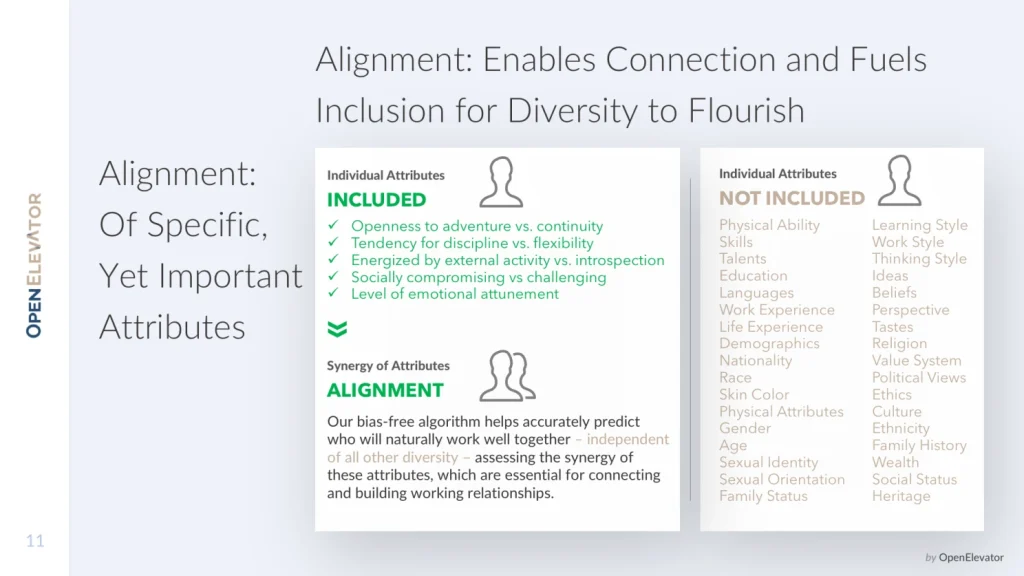
Specifically, the people YOU are ALIGNED with at work will deliver without drama because they:
✅ deliver in-line with YOUR standard (vs. other people’s lax or unachievable standards)
✅ keep YOU in the loop (vs. inundate you with too many details or leave out key information)
✅ understand priorities (vs. not)
✅ are straightforward (vs. too sensitive, incapable of handling truths or brutally honest, even offensive at times)
✅ are uncomplicated (vs. hard for you to read)
in a nutshell: because they are in tune with YOU and YOUR expectations!
And this alignment can be assessed before you form a team, when recruiting, re-assigning or relocating talent. The assessment helps you understand which individuals work best together to increase quality of collaboration, including across functions & geographies and ensure long-term employee engagement.
This alignment helps teams collaborate better, reduce drama, and boost bottomline in any department.
Whatever action you decide to take, we hope that just having this framework of the drivers of engagement helps you and your team.
We have built the OpenElevator platform to help you get insight and take action so that you and your team can fully reap the benefits of engagement.
Specifically, we deliver people alignment rankings and scores based on our two-sided, bias-free assessment.
To begin with, we recommend you try the assessment on your own existing team. This allows you to gain the same confidence as all our other clients in the outstanding accuracy of the resulting data. Validating the outcome against your own experience, while uncovering the ease of collaboration and values alignment across the team is truly powerful. We offer a FREE gift coupon, sent to you immediately after you sign up.
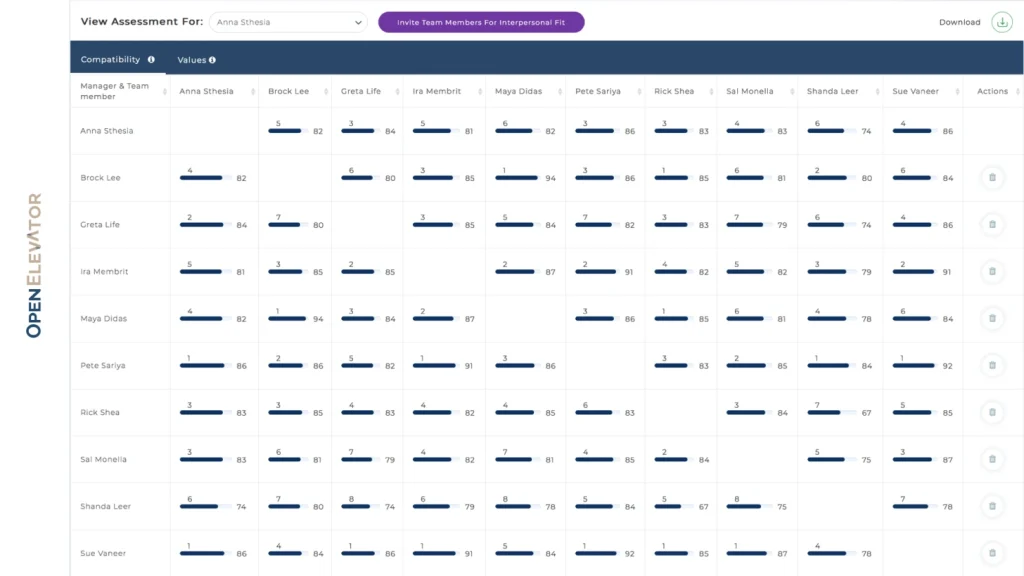
Coming back to the bottom-line: while we know that low engagement is costly, the upside is even more exciting to consider. According to Gallup
“companies with high employee engagement have a nearly 150% higher earnings per share vs. their competition.”
In short, connecting people who naturally work well together to fuel long-term engagement is both team collaboration and boost bottomline relevant and a real competitive advantage.
And—equally important to us at OpenElevator—engagement is a real driver of quality of life for you and your team.
Have a question? Find answers in our FAQ!

Turnover cost explained—discover direct and indirect costs, root causes, and proven strategies to reduce employee turnover for U.S. companies.

Discover a practical 7-step retention strategy checklist tailored to help leaders and business heads effectively reduce employee turnover and boost engagement.

Learn what causes high turnover, from organizational factors to cultural misalignment and leadership issues. Discover actionable strategies for lasting retention.